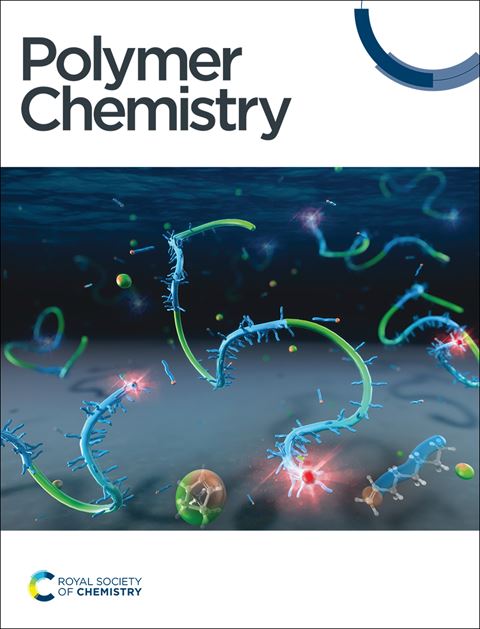Biobased Multifunctional Ingredients for Manufacturing Tire Tread with High Mechanical Strength and Fuel-Saving Efficiency
IF 3.9
2区 化学
Q2 POLYMER SCIENCE
引用次数: 0
Abstract
Energy-saving and environmental sustainability have driven the tire industry to develop high-performance tires especially that feature high energy efficiency and moving towards sustainable materials. Herein, we reported the synthesis of a series of bio-based sulfur-rich copolymers (SPs) through the inverse vulcanization of plant oils and sulfur, a massive byproduct from petroleum industry. These SPs serve as multifunctional ingredients for carbon black (CB)-reinforced rubber composites. Leveraging the reactivity of polysulfide segments towards rubber chain and polycondensed aromatic moieties of CBs as well as the affinity of the functional groups with the oxygenic groups on CB surface, the bio-based SPs act as both reactive plasticizers and interfacial modifiers. Compared to conventional petroleum-based plasticizer, SPs exhibit superior migration resistance and give the resulting composites higher network strength. Meanwhile, incorporation of SPs significantly improves CB dispersion and enhances the interfacial adhesion of SP-based composites, thus leading to high mechanical properties and remarkably decreased hysteresis loss. Especially, the esterified poly(S30-ER70) shows great potential as multifunctional ingredient for the preparation of high performance tires; the poly(S30-ER70)-based tread composite demonstrates a 16.5% reduction in rolling resistance, 10.7% improvement in wet traction performance, and 13.4% increase in aging-resistance, compared to traditional aromatic oil (AO)-based composite. Moreover, the presence of dynamic covalent bond (-S-S-) imparts excellent recyclability to the poly(S30-ER70)-based rubber material.制造高机械强度和节油效率轮胎胎面的生物基多功能成分
节能和环境可持续性推动了轮胎行业开发高性能轮胎,特别是具有高能效和可持续材料的轮胎。在此,我们报道了通过植物油和石油工业的大量副产物硫的反硫化合成一系列生物基富硫共聚物(SPs)。这些SPs作为炭黑(CB)增强橡胶复合材料的多功能成分。利用聚硫段对橡胶链和CB的聚缩合芳香基团的反应性,以及官能团与CB表面氧基的亲和力,生物基SPs既可以作为反应性增塑剂,也可以作为界面改性剂。与传统的石油基增塑剂相比,SPs具有更好的抗迁移能力,并使合成的复合材料具有更高的网络强度。同时,SPs的加入显著改善了CB分散,增强了sp基复合材料的界面附着力,从而提高了复合材料的力学性能,显著降低了磁滞损失。特别是酯化聚S30-ER70作为高性能轮胎的多功能原料,具有很大的潜力;与传统芳香油(AO)基复合材料相比,聚(S30-ER70)基胎面复合材料的滚动阻力降低了16.5%,湿地牵引性能提高了10.7%,耐老化性能提高了13.4%。此外,动态共价键(- s - s -)的存在使聚(S30-ER70)基橡胶材料具有优异的可回收性。
本文章由计算机程序翻译,如有差异,请以英文原文为准。
求助全文
约1分钟内获得全文
求助全文
来源期刊

Polymer Chemistry
POLYMER SCIENCE-
CiteScore
8.60
自引率
8.70%
发文量
535
审稿时长
1.7 months
期刊介绍:
Polymer Chemistry welcomes submissions in all areas of polymer science that have a strong focus on macromolecular chemistry. Manuscripts may cover a broad range of fields, yet no direct application focus is required.
 求助内容:
求助内容: 应助结果提醒方式:
应助结果提醒方式:


